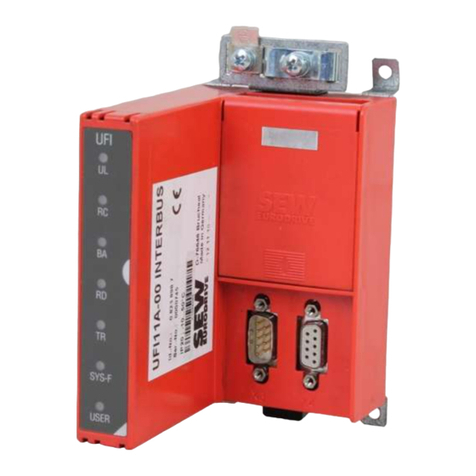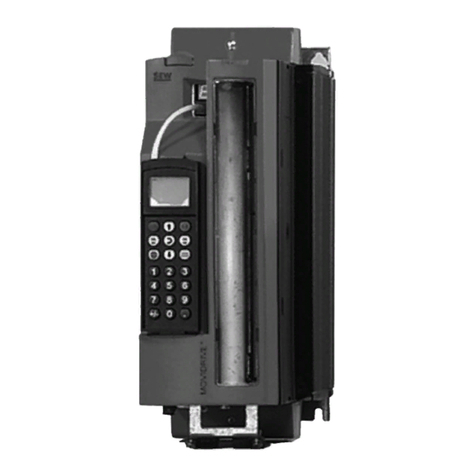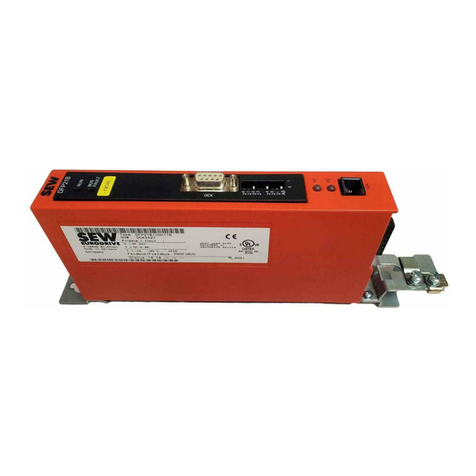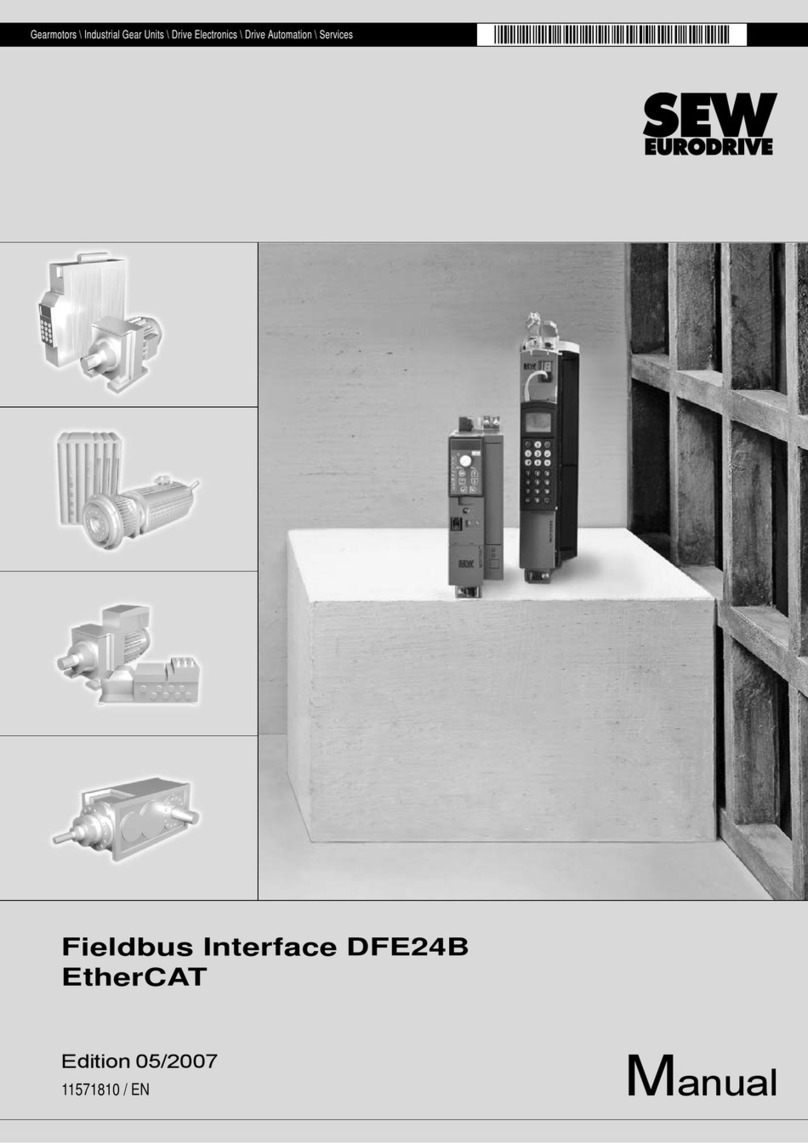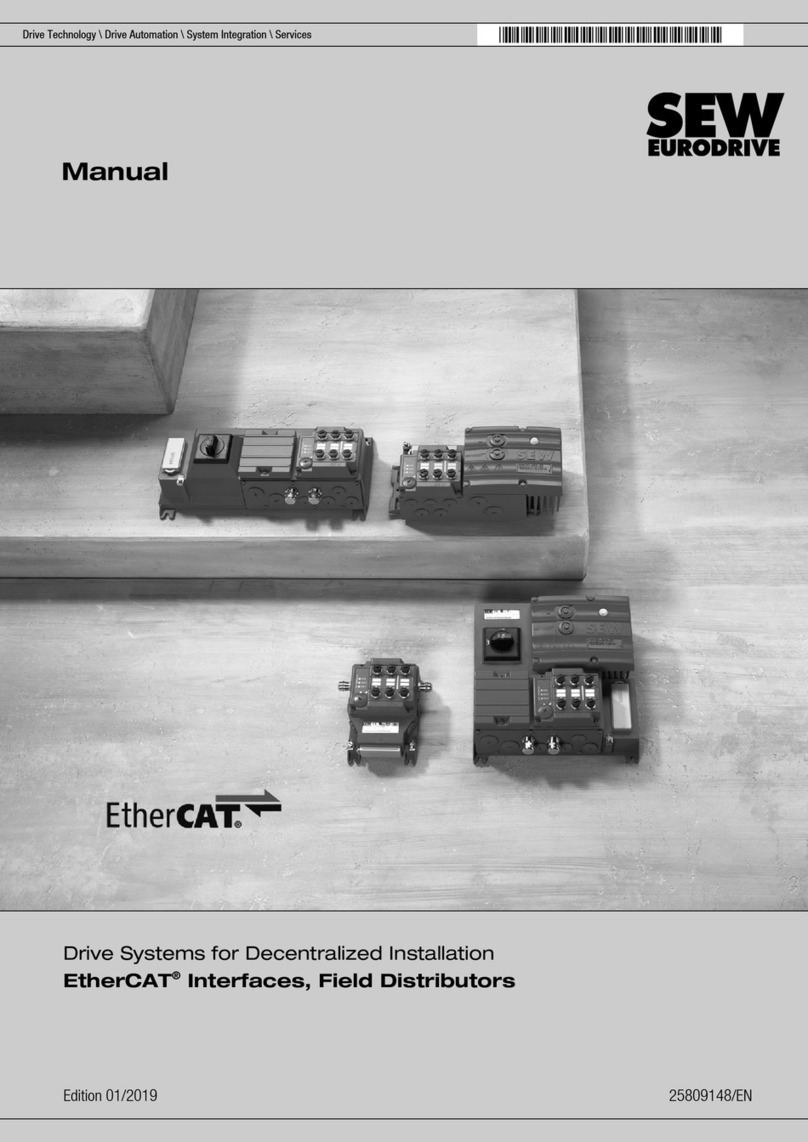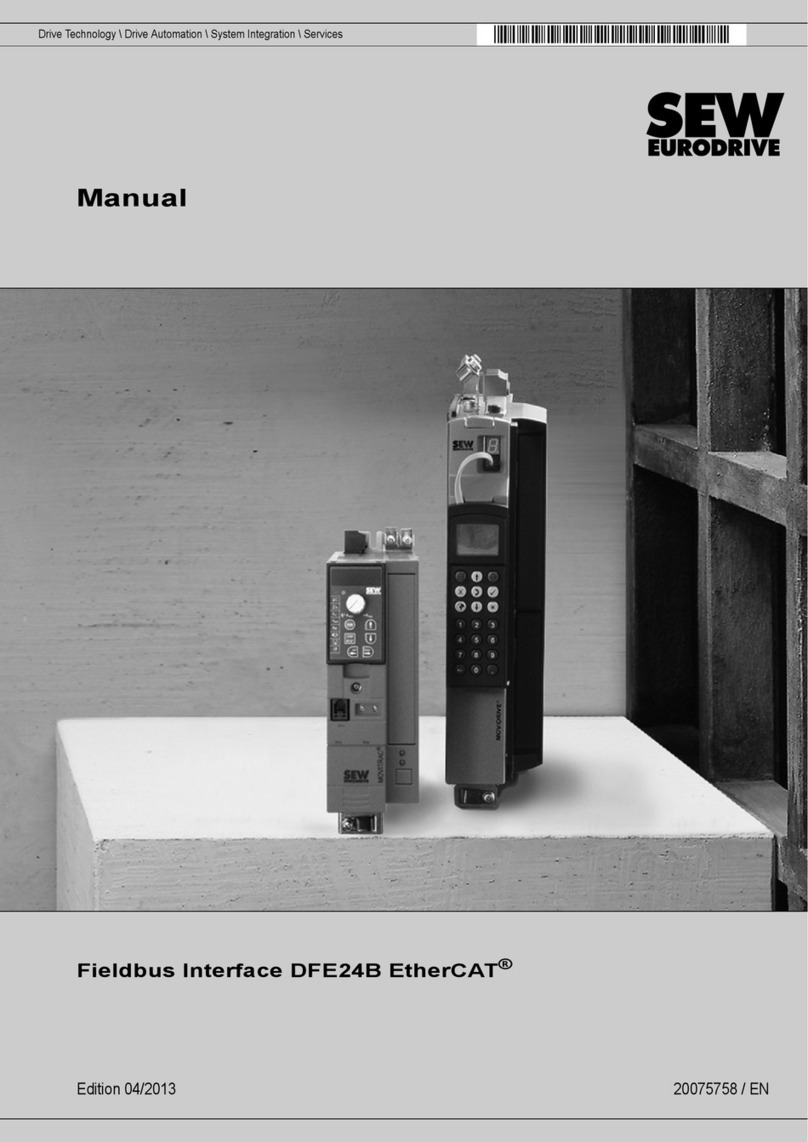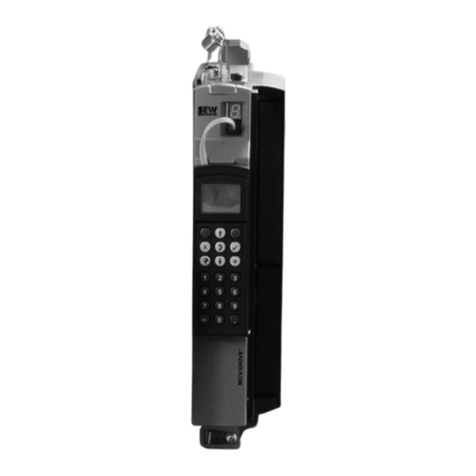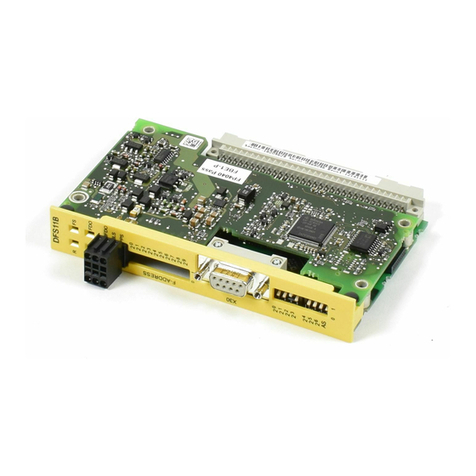
CANopen Fieldbus Interface DFO11A
17
3
Data exchange with CANopen
Node Event
Node guarding is active in all operating states following the first reception of a "Node
Event" from the master.
With this CANopen option pcb, the Node Event can be chosen freely from the following
events:
• reception of an RTR Guard message from the master
• reception of an RX-PDO1
• reception of an RX-PDO2
Node Event can be programmed with object index 0x2010, subindex 0, whereby the
object (an UNSIGNED32) is structured as follows:
For the time being, bits 3 through 31 are not defined and must always be 0.
The default value following a CANopen reset is 1; that is, only RTR Guard messages
are accepted as Node Event.
Sync object
The optional Sync Object presented by CANopen is not analyzed by the CANopen
option pcb.
Error detection
Errors in the inverter can be detected by checking the index 0x1001 (Error Register) or
0x1002 (Manufacturer Status Register). But in order to keep the bus load as low as
possible, it is practical to place the status word after a process input data word. This
allows for quick error detection without creating an additional bus load. Additional
signalling options, especially the emergency object, were not implemented.
"Error History" includes a maximum of the last five errors. These errors can be queried
via the index area of the inverter or in accordance with CANopen profile via object
0x1003. If a "0" is written into this object at subindex 0, the "Error History" will be deleted.
Object directory
All CANopen objects relevant for DFO11A are entered in the CANopen object directory.
The object directory is divided into two areas:
• Communication-specific profile area (index 0x1000 - 0x1BFF)
• Manufacturer-specific profile area (index 0x2000 - 0x5FFF)
All communication-specific objects and some objects especially relevant for DFO11A
are listed in their entirety in the appendix.
The manufacturer-specific objects of the MOVIDRIVE®inverter are described in the
fieldbus unit profile.
However, CANopen allows only Read and Write services to the manufacturer-specific
objects via SDO. If the SEW-specific services of the MOVILINK®fieldbus unit profile
should be used (e.g., read minimum, read maximum, read default, write volatile, ...), this
can be accomplished using a detour via objects 0x2066 and 0x2067. Object 0x2067 (a
SIGNED32) contains the data intended to list the next MOVILINK®or the result of the
last MOVILINK®service if it was successful.
Bit 2 Bit 1 Bit 0
Every RX PDO 2 represents a
Node Event Every RX PDO 1 represents a
Node Event Every incoming RTR Guard
message represents a Node
Event
00
I






















